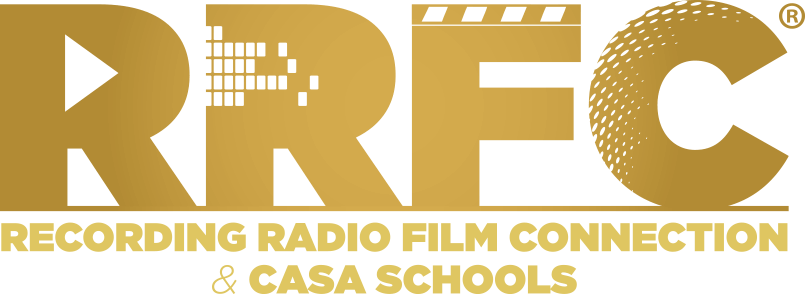
Singers, Work Thy Mic!
Having a good voice is one thing. Being able to sing in-studio requires a bit more than that. Professional vocalists and session singers know how to use their voices to convey various emotions and textures, and they know how to “work the mic” in order to achieve the desired effect. Here are our tips for working with the mic and setting yourself up for success when you go into the studio to lay down those vocal tracks!
1 – Communicate Your Needs
The truth of the matter is that a great deal of what goes wrong when it comes to singing in studio can be avoided when the vocalist clearly communicates their needs to the producer and/or engineer on session. Many singers, especially those just starting out, go into the studio with a mild-to-severe case of the nerves. Understandable as that is, a case of the nerves doesn’t produce great vocals. Take heart in knowing that everyone in that session has a professional responsibilty to set the singer up for success for precisely this reason: comfortable artists produce solid takes. Hence, a productive session starts with the artists being comfortable and having everything they need to do their best work.
Consider then, what helps you perform at your best? Perhaps you need room temperature water on hand, less light, or a certain amount of feedback from the producer to validate that you’ve got the phrasing right. Think about your needs prior to the day of the session and communicate them to the producer you’ll be working with. He or she may need to add some time to their schedule to work with you directly, or they may want to meet with you prior to the session in order to ensure you have all your questions answered and needs met.
2 – Manage Your Experience at the Mic
One common need for singers is having the right mix in their headphones. A good audio engineer will work with you to make sure the mix you’re hearing is the one that works for you. Singers vary widely in what they require in their headphone mix. Many singers prefer a bit of reverb added to their voice, even if reverb isn’t actually called for on the track (that’s easily achieved, so don’t worry if you want it). If you tend to key-in to one or two instruments on the song such as the piano, guitar, or bass, communicate that to the producer so that they can make sure your mix is set up right for you.
Managing your experience at the mic also includes taking breaks when needed. This could be a 5 minute breather outside to collect yourself, or short breathing breaks between takes. Some singers want to get their energy way up before hitting certain notes or lyrics, so know what works for you and if it’s kind of weird, know this, you’re not the only one.
3 – Make Sure Your Mix Levels are Right
Simply having the right mix isn’t enough. You also need to be very aware of the volume you’re getting in your headphones. If the vocal take you’re getting is too loud, it may cause you to oversing your part, or conversely, under-sing your part. Certain instruments being too loud or soft may also steer you off course, so be aware of the overall volume you’re hearing and whether that affects the volume of your singing. Your goal is to find the place at which you feel most natural in both volume and pitch.
One way to help you get grounded is to leave one ear out of the headphones. This enables you to tune-in to the accoustics of the vocal booth or room you’re recording in while also hearing the music you are singing to.
4 – Understand the Proximity Effect
As you probably know, mics vary a lot! From high-end Neumann’s and Shure mics to the respectable, yet affordable mics made by Audio-Technica like the AT2020 or AT4040 condenser mics, a lot depends on the mic and knowing how to make it work with your voice. The most important thing to understand is something called the “proximity effect.” Every mic has a particular sweet spot that changes slightly from singer to singer. Hence, one singer may sound great just one inch away from the mic, while another will sound better at one and a half inches away from the very same mic. This has everything to do with your voice’s unique sonic characteristics and the polar pattern of the microphone itself.
Bear in mind, some mics will have their sweet spot a full foot (or more) from the mic. Omnidirectional microphones might have you standing feet away from the mic (they aren’t typically used in in-studio sessions but can be used in ensembles). Other mics want you to be up close and intimate. Nowadays, many mics have a pop filter placed in front of them, usually a round disk shaped object, you sing through this filter, usually at a range of six to one inches away, and into the mic. The distance between mic and filter is set by the engineer.
The proximity effect also comes into play when you consider the actual volume and force of your singing. If you’re really projecting your voice and are belting one out like Adele in “Someone Like You,” you’ll probably instinctively back off from the mic which can be a good thing but take care not to lean back too far because doing so will mean you’re out of the desired range or “sweet spot.”
If rather than belting one out, your vocals are meant to sound hushed like a Norah Jones “Dreams” or Portishead’s “Glory Box” it may be desirable to sing a bit closer to the mic or filter. If you’re speaking on a track, capturing certain vocal characteristics like vocal fry usually requires very close proximity to the mic.
The basic rule of thumb is the closer you get to the mic, the more boomy the sound, and conversely, the further you get from the mic, the thinner or more tinny you sound. Once you move super close or “eat the mic” as they say, breathing becomes audible as do the various sounds created by your cheeks, tongue, and nasal cavities.
5 – Beware of Drift
Now that you know about the proximity effect, you also have a greater understanding as to how drifting towards or away from the mic can impact your vocals. Also be aware of the angle of your head as you sing. If you’re playing an instrument while you’re singing, it’s vital that the mic is setup to accomodate you so that you can see your instrument and sing without having to move your head a great deal.
It’s a good idea to establish what the sweet spot is for the mic you’ll be singing into. Moving within this range is admissible as long as it doesn’t hurt your performance. Obviously, drift can actually be a desired effect on a particular vocal. If this is the case, play around with various distances to see what you get. Moving closer and further can add interest to particular vocals and help convey a wider range of emotions and tones, from soft and sultry to supercharged and explosive. If you plan on experimenting with this, check out Sade at the mic and see how she subtly works it for maximum effect.
That being said, a majority of the time it’s best to remain stationary and in a natural, grounded posture that works for you. More on that below!
6 – Get Grounded
Most of the time being grounded i.e. rooted into the ground is the best stance to assume as a singer. A typical grounded stance has the feet at hip or shoulders width apart, the feet flat on the ground, and the toes capable of clenching into the floor. Being barefoot or in socks can help some singers.
If your tendency is to move while you sing, it’s best to use that energy in the lower part of your body while keeping the head stable at the desired distance from the mic. Rolling or swaying one’s hips can be a great way to rouse a full rich sound and to keep the voice from sounding too thin. Another tactic is to clench the glutes when hitting a high note or belting one out.
7 – Take Silent Breaths
Getting unwanted breathing sounds on a track can create a lot of work for the engineer. So make sure your breathing isn’t audible. Feel free to ask the producer or engineer if they can hear your breathing. They’ll probably be thankful you did. You can check yourself by breathing normally and listening to see if you hear anything. Diet, current air pressure, and various other factors can change how you breathe so it’s important to check your breathing every time you record to make sure it isn’t audible. One tip for taking silent breaths is to open your mouth slightly with the teeth about a centimeter apart and the lips in a neutral, unpursed position. Next, breathe in, focusing on breathing into your ears and in a manner that makes you feel like raising your eyebrows (sure that sounds weird but try it). As you breathe, also get your diaphragm in on the action by breathing into it and activating your core. You should feel the muscles in your abdomen engage while your shoulders remain in a relaxed, neutral position.
8 – Have a Good Audio Engineer
The difference between sounding like a novice and a professional singer often comes down to having a good engineer. If you’re recording a demo, you defintely want the right engineer. So, make sure to give them a solid chance to perform well for you by clearly communicating your goals (as explained in Tip #1) as well as telling them the desired sound you’re going after. Naming other singers who are within a similar style and vocal range can be extrememely helpful, so have at least two to three singers you can mention. If you have links to their songs loaded on your phone, even better! Do everything you can to help the engineer you’re working with get a firm understanding of the sound you’re going after. From there, a solid engineer will be able to get you setup with the right mic or mics and the sonics you need to do your best work.
If you are working with a music producer, common etiquette is to communicate your needs through the producer. That being said, it may be helpful to tell the producer you’d like to interface with the engineer as well to ensure the mic and mix are setup to your taste. Some producers will step aside at this point, while others will want to manage that experience. Both are fine as long as the work gets done correctly.
Being a singer who works in music requires a good voice, tenacity, and the ability to manage your vocals effectively within the studio environment. Engage in learning more about the technologies that go into capturing and to some extent, creating great-sounding vocals, and you’ll be a cut above the many singers who are deemed hard to work with, poorly prepared, or incapable of getting the right sound. While you can’t control many aspects of the music industry, you can control how skilled, prepared, and dedicated you are to achieving your own personal best. So, get in there and work that mic!
5 Tips for Better Singing Today
Here’s What Producers Really Want from Artists In-Studio
DIY All the Way: Lindsey Kappa (Austin, TX) Jumps In!



